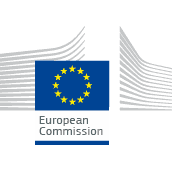
Full-scale demonstration of urban road transport automation
Date de clôture : 27 sept. 2017
APPEL À PROJET CLÔTURÉ
APPEL À PROJET CLÔTURÉ
Entrepreneuriat et PME
Innovation
Coopération internationale
Développement urbain
Transport
Transport urbain
Horizon Europe
Sciences du climat
Recherche
Pollution
Topic Description
Specific Challenge:Fully automated road transport systems have the potential to revolutionise urban transport offering high quality public transport services which are not feasible with conventional public transport systems. Low speed full automation systems have been demonstrated in several European cities. However full-scale demonstrations are still necessary to prove the reliability, safety and robustness of fully automated road transport systems in complex scenarios in urban areas. In addition, it is necessary to address the remaining questions, such as user acceptance and legal framework and to develop business cases to make fully automated urban road transport systems economically viable.
Scope:Proposals should demonstrate fully automated road transport systems which should be complementary to mass transit to reach low to medium demand areas with high quality transport services. A fleet of automated road transport vehicles (e.g. light weight vehicles, cyber cars, small buses) should be implemented at pan-European level in urban and/or sub-urban areas. The demonstrated systems should be fully integrated into existing public transport systems and should provide evidence of their safety, reliability and fault tolerance in complex traffic scenarios (with automated and non-automated vehicles, pedestrians, cyclists, powered two-wheelers, etc.)
Proposed actions should assess the user acceptance and effects on transport demand and modal transfer. Attention should also be paid to the analysis of socio-economic impacts and benefits of urban automated vehicle fleets as part of an integrated transport system, such as improved accessibility of persons with reduced mobility, elderly, etc. Gender specificities should be considered. Recommendations for local and national authorities to deploy fully automated road vehicles should be developed.
Active participation of SMEs is strongly encouraged.
In line with the Union's strategy for international cooperation in research and innovation[[COM(2012)497]], international cooperation is encouraged. In particular, proposals should foresee twinning with entities participating in projects funded by US DOT[[United States Department of Transportation.]] to exchange knowledge and experience and exploit synergies.
The Commission considers that proposals requesting a contribution from the EU of between EUR 10 to 15 million each would allow this specific challenge to be addressed appropriately. Nonetheless, this does not preclude submission and selection of proposals requesting other amounts.
Expected Impact:Actions are expected to demonstrate the reliability, safety and robustness of fully automated road transport systems in complex scenarios in urban areas. They should develop innovative solutions for the safe and smooth integration of automated vehicles into the existing transport system in urban areas, as well as door-to-door public transport services, which can change radically the mobility paradigm of European cities. Therefore, actions will contribute to the development of modern, more efficient urban transport systems, with reduced impacts on climate change, air pollution, noise, health and accidents. Moreover, actions will provide detailed knowledge and recommendations which enable transport authorities, policy makers and business to invest in urban automated vehicle systems and support the development of innovative mobility services (e.g. car sharing, road train systems, etc.).
Lien officiel : Disponible pour les utilisateurs enregistrés




S'il vous plaît Se connecter pour voir cette section